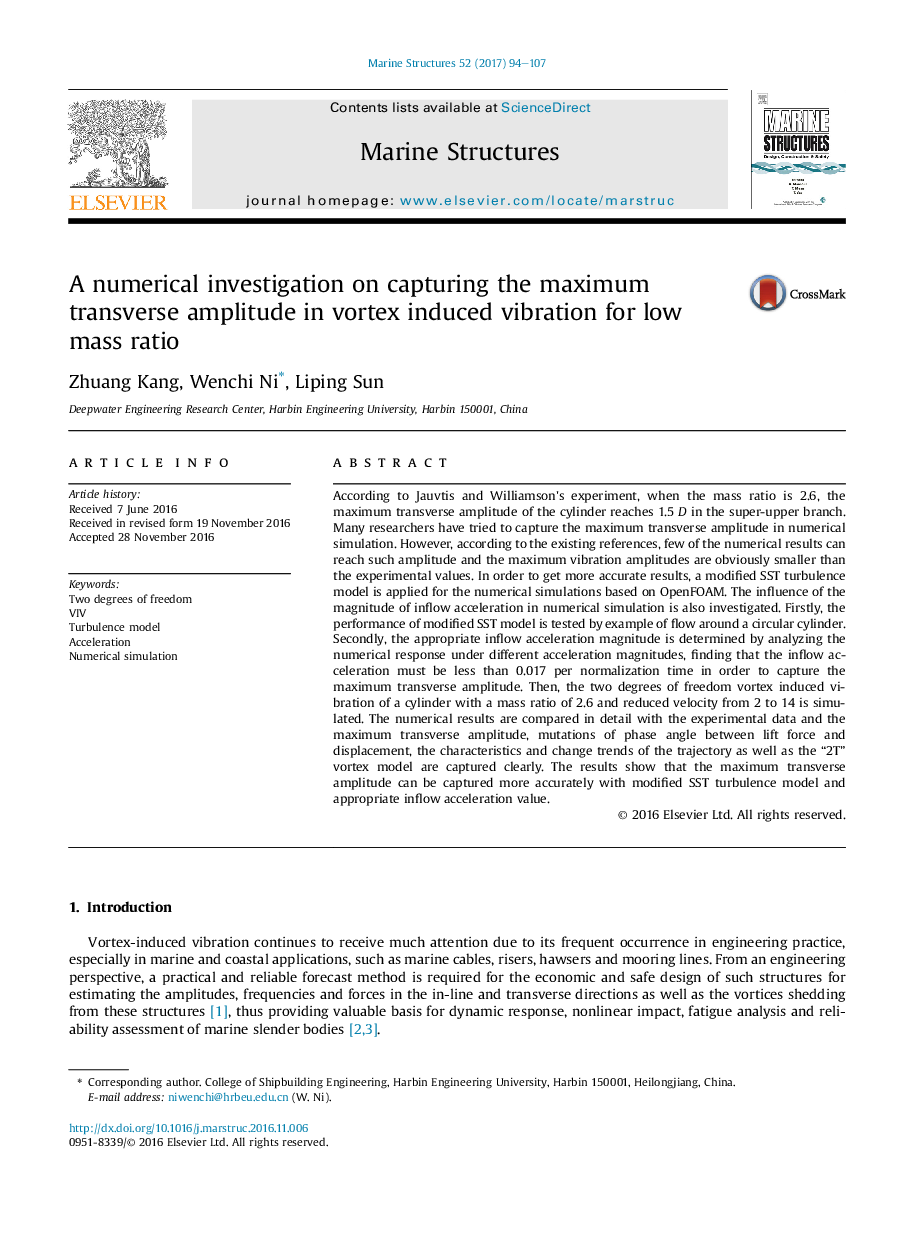| Article ID | Journal | Published Year | Pages | File Type |
|---|---|---|---|---|
| 4925053 | Marine Structures | 2017 | 14 Pages |
Abstract
According to Jauvtis and Williamson's experiment, when the mass ratio is 2.6, the maximum transverse amplitude of the cylinder reaches 1.5 D in the super-upper branch. Many researchers have tried to capture the maximum transverse amplitude in numerical simulation. However, according to the existing references, few of the numerical results can reach such amplitude and the maximum vibration amplitudes are obviously smaller than the experimental values. In order to get more accurate results, a modified SST turbulence model is applied for the numerical simulations based on OpenFOAM. The influence of the magnitude of inflow acceleration in numerical simulation is also investigated. Firstly, the performance of modified SST model is tested by example of flow around a circular cylinder. Secondly, the appropriate inflow acceleration magnitude is determined by analyzing the numerical response under different acceleration magnitudes, finding that the inflow acceleration must be less than 0.017 per normalization time in order to capture the maximum transverse amplitude. Then, the two degrees of freedom vortex induced vibration of a cylinder with a mass ratio of 2.6 and reduced velocity from 2 to 14 is simulated. The numerical results are compared in detail with the experimental data and the maximum transverse amplitude, mutations of phase angle between lift force and displacement, the characteristics and change trends of the trajectory as well as the “2T” vortex model are captured clearly. The results show that the maximum transverse amplitude can be captured more accurately with modified SST turbulence model and appropriate inflow acceleration value.
Related Topics
Physical Sciences and Engineering
Engineering
Civil and Structural Engineering
Authors
Zhuang Kang, Wenchi Ni, Liping Sun,
